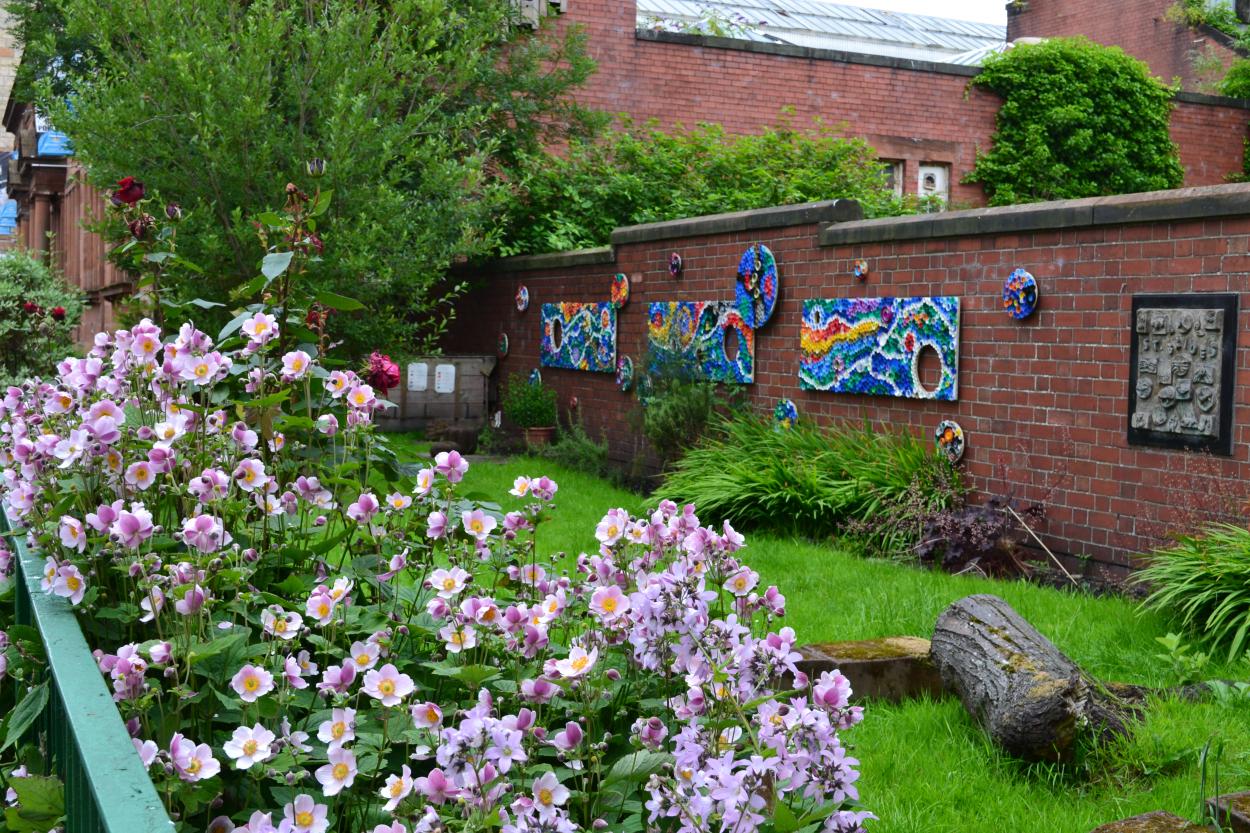
Our work on bringing together planning and health has placed value on conversations and building relationships in order to better understand local needs and how neighbourhoods make people feel. Our conversations about people’s quality of life experiences have allowed us to realise that where you live really does matter, and that place has a huge impact on health and wellbeing. Recent Scottish Government policy has placed a strong emphasis on consultation and engagement with local people and communities. Our experience in the east end of Glasgow has found that building a comprehensive community engagement programme into the plan-making process has resulted in a smoother planning process with fewer objections and an increase in local input.
We have considered how best to integrate health and wellbeing into the planning system without imposing undue bureaucracy upon professionals. The Healthy Sustainable Neighbourhoods (HSN) Model is now part of Glasgow City Council’s approach to placemaking practice and has led to the development of Placestandard.scot

Creating a link between people and place encourages ownership and stewardship. Successful places can provide communities with an important cultural context, a sense of pride and belonging, and a sense of local and national identity; all of which are likely to improve people’s health, happiness, and wellbeing. It can provide environments which function well, link well with surrounding settlements, and provide attractive areas in which to socialise, to move around and to do business. It can also have a major influence upon the sustainable economic growth of an area. By making it an appealing place to live, to work and to visit and by providing a high quality environment with good infrastructure, the City will attract new business and investment.
The places that we live, work, and spend our leisure time in have an intrinsic influence upon the health and lifestyle choices we are able to make. How we travel, how safe we feel, our sense of wellbeing, our opportunity to work, and our potential for formal or informal exercise are all dictated by our environment and by promoting placemaking there is an opportunity to put health at the centre of our aspirations.

The table above illustrates how health can be translated into land use actions to help inform Placemaking. Glasgow, more than any other city in Scotland, must continue to give increased priority to the potential health outcomes that successful placemaking can deliver. The health inequalities and problems which Glasgow experiences are well established and addressing these is central to the City’s Strategic Plan and Single Outcome Agreement. The Plan has a vital role in seeking to address and reverse these problems by ensuring placemaking is at the centre of all spatial activity and embedding it in all of The Plan’s policies and proposals. Glasgow City Council has played a leading role in addressing health inequalities through planning and placemaking. Its people-centred approach and recognition of the linkages between the complexities of health inequalities and place have been fully endorsed and supported by the Scottish Government and the Chief Medical Officer for Scotland. Central to this is promoting the use of the Glasgow Healthy Sustainable Neighbourhood Model which encourages a holistic approach to planning and will help to ensure that people and communities are at the centre of decisions

In Addition, Architecture and Design Scotland (A&DS) is working with the Scottish Government Health & Social Care Directorate (SGHSCD) and Health Facilities Scotland (HFS) to support Health Boards create truly healing places. Quality underpins the future vision for healthcare in Scotland; the quality of support and services provided by the NHS, Local Authorities and the Third Sector, and the quality of environment needed to support each community in this. The vision is for:
“an estate designed with “a level of care and thought that conveys respect”; buildings that grow from the local history and landscape, that are developed in partnership with the local community. A work of joint learning and joint responsibility that is particular to that community and that place; “not off the shelf shoe boxes”.
(ref: CMO in A Vision of Health)
The way AD&S work is tailored to the circumstances of each project, but in general terms they:
- Assist those commissioning new, or substantially redeveloped facilities, to set strategic design standards for the project, linking the business objectives to the quality of environment created for patients and staff – the attributes the facility must possess to allow people to access and provide the required services – and the additional benefits that can be realised through investment in that community. This ‘Design Statement’ is illustrated with views of what success might look like, learning from recent good practice developments, to provide a project specific vision which is then embedded in the business case process.
- Provide a co-ordinated assessment, with HFS, of the potential quality of proposed projects to support those responsible for decision-making within the business case process.
- Communicate evidence on the value of design and examples of good practice in both processes and products across NHSScotland through publishing guidance, design studies and by communicating the successes and lessons of completed developments. Within the Healthier Places part of the A&DS website you will find ‘Pulse‘ a database of case studies and images of healthcare environments across Scotland and beyond, allowing clients and design teams to share their successes and explore possibilities for new projects.
- Engage with partner organisations and central procurement agencies to assist them in their work and in raising awareness of external parties involved in delivery.
- Assist Boards to consider the future shape of their estate and engage with partners in Local Authorities in developing community wide approaches to the infrastructure needed to underpin the 2020 Vision.
This programme is underpinned by the Scottish Government Health Directorate’s ‘Policy on Design Quality for NHSScotland’. This important piece of guidance recognises the increasing body of evidence that the principles of good design – such as integration into the community and a sense of place – make a quantifiable positive impact on patients, visitors and staff.
